Canada Wood Connects Asian Designers and Policymakers at Woodrise 2025
Last week’s Woodrise 2025 in Vancouver marked another milestone for global mass timber collaboration — and Canada Wood was proud to lead a delegation of architects, engineers, professors, and developers from China and Korea to explore the latest innovations shaping the future of sustainable construction.

Canada Wood’s Asia Delegations at Woodrise
Throughout the week, delegates participated in the Woodrise conference sessions, joined technical exchanges with FPInnovations, UBC, BCIT and leading Canadian mass timber designers like Dialog and Timber Engineering, and visited landmark wood buildings across Metro Vancouver and Vancouver Island. These included the Brock Commons Tallwood House, BCIT’s Tall Timber Student Housing, and The Hive project — all showcasing Canada’s leadership in advanced wood engineering and design.
The program provided first-hand exposure to Canada’s latest R&D in seismic and fire performance, carbon accounting, and prefabricated off-site systems — key technologies that are rapidly gaining traction in Asian markets.


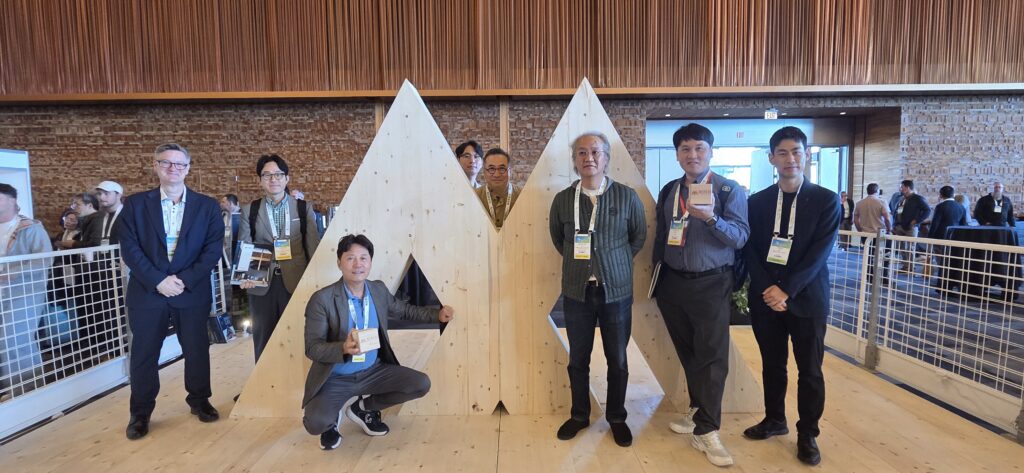

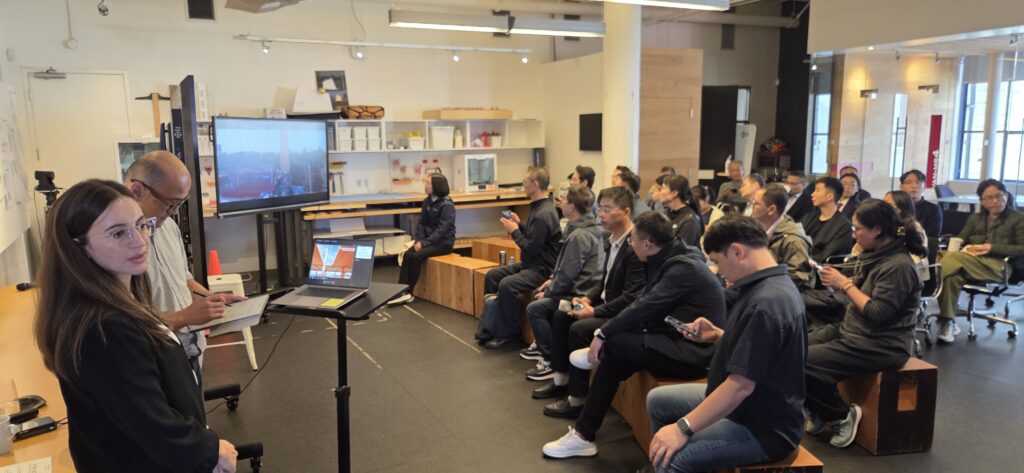
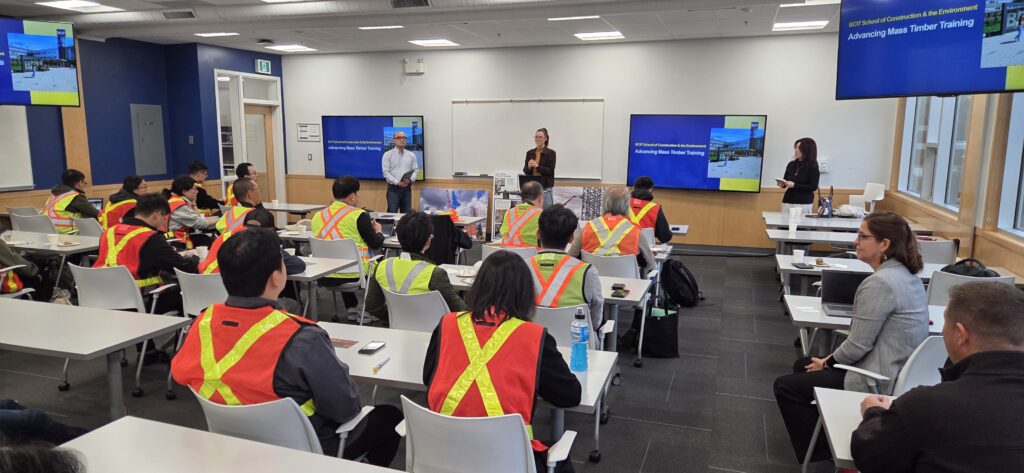
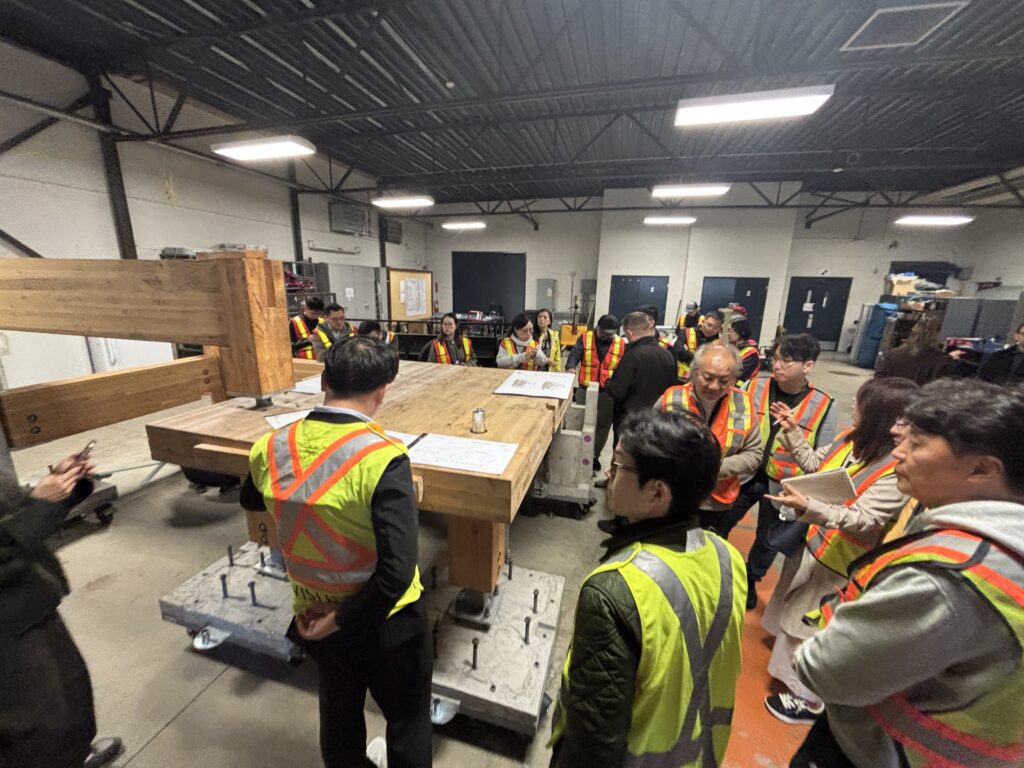
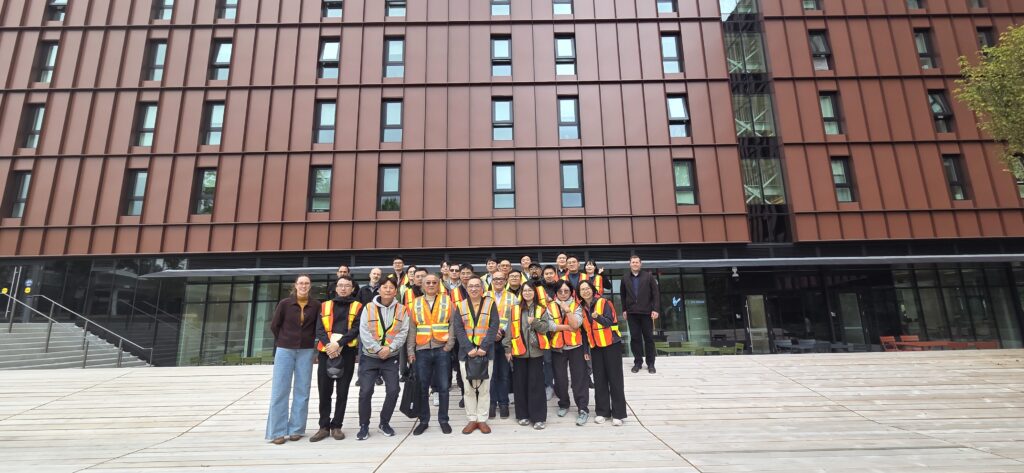
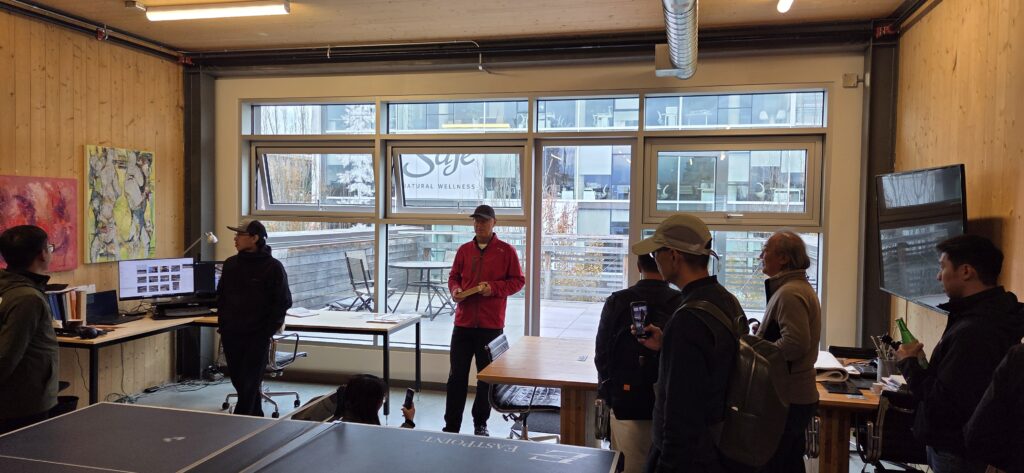
Growing Mass Timber Opportunities in China
China has rapidly evolved into one of the world’s fastest-growing markets for engineered wood, particularly glulam. In recent years, hundreds of public and civic buildings have adopted timber structures, supported by China’s “dual carbon” goals and a nationwide push for greener construction.
With more than 460 mass timber projects now tracked across China, demand for engineered wood products is projected to double by 2026, surpassing 300,000 m³ annually. Canadian species — especially Douglas Fir — are increasingly featured in structural applications.
Canada Wood’s technical team has been deeply engaged in China’s ongoing CLT product and design code development, ensuring Canadian species and grades are appropriately represented in national standards. This milestone will pave the way for broader adoption of Canadian mass timber in China’s public, education, and healthcare sectors — sectors where sustainability and carbon reduction have become central policy priorities.
In parallel, Canada Wood China is working closely with Chinese research institutions and manufacturers to introduce Hem-Fir into glulam production, supporting mechanical testing, product certification, and design standard inclusion. These efforts aim to establish Hem-Fir as a trusted and cost-effective species for engineered wood applications in China’s public and commercial building sectors
Korea’s Path Toward Timber Urban Housing
Korea’s participation at Woodrise 2025 came at a critical turning point for the country’s construction sector. Among the delegates were senior officials from Land and Housing Corporation (LH) and its research arm, KLHRI, who are spearheading a national strategy to integrate wood construction into public housing and pursue carbon neutrality by 2050.
Established in 2009, LH delivers 50,000–100,000 public housing units annually. Its new roadmap envisions replacing precast concrete with wood-based off-site construction (OSC) systems and exploring mass timber high-rise prototypes — including plans for Korea’s first mass timber residential high-rise tower in the coming years.
Canada Wood has been collaborating closely with LH and KLHRI to develop wood-based exterior wall systems, construction guidelines, and demonstration projects such as the Dagagu (multi-family) housing model, which highlights hybrid wood structures and acoustic performance improvements. These initiatives mark a shift in Korea’s housing paradigm — from traditional reinforced concrete to industrialized, low-carbon, high-quality timber housing.


